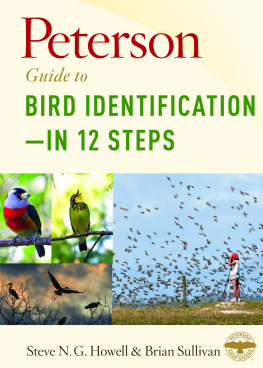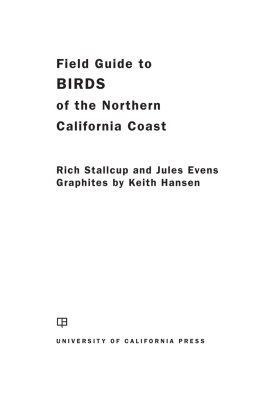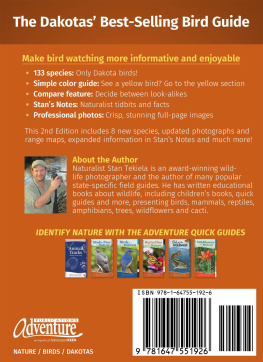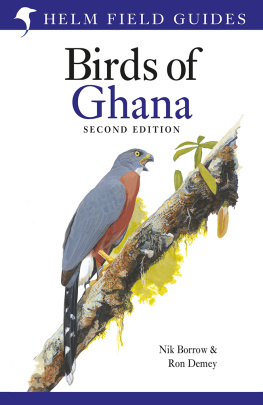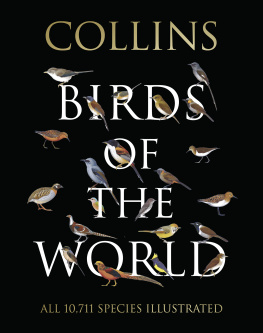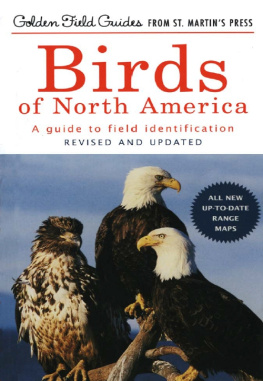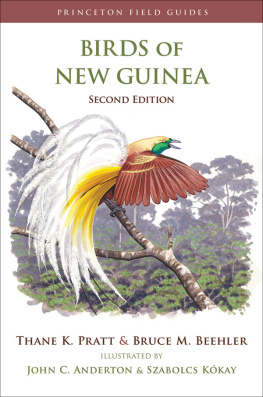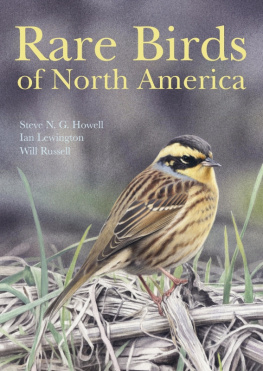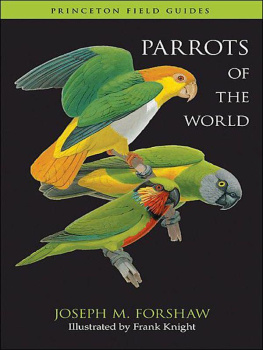Rare Birds of North America
STEVE N. G. HOWELL
IAN LEWINGTON
AND WILL RUSSELL
Rare Birds
of North America
PRINCETON UNIVERSITY PRESSPRINCETON AND OXFORD
Text copyright 2014 Steve N. G. Howell and Will Russell
Illustrations 2014 by Ian Lewington
Requests for permission to reproduce material from this work should be sent to Permissions, Princeton University Press
Published by Princeton University Press, 41 William Street, Princeton, New Jersey 08540
In the United Kingdom: Princeton University Press, 6 Oxford Street, Woodstock, Oxfordshire OX20 1TW
nathist.press.princeton.edu
All Rights Reserved
Jacket art: Siberian Accentor Ian Lewington
ISBN 978-0-691-11796-6
Library of Congress Control Number: 2013943112
British Library Cataloging-in-Publication Data is available
This book has been composed in Gill Sans std and ITC Cheltenham std
Printed on acid-free paper.
Printed in China
12345678910
Contents
Preface
). However, many rarities treated in the above works are common elsewhere in North America, and only rare in a given state or province.
Our goal has been to summarize patterns of occurrence for species that are truly rare in North America as a whole (most of which, of course, are common in their normal ranges). Inevitably, defining a rare bird proved to be a challengethere is an intuitive component that may elude statistical quantification, and whats rare today may be common tomorrow. Thus, no such definition will ever be perfectnature does not fit into boxes of human constructbut we feel our definition works well for our purposes (see What Is a Rare Birdand When and Whence? p. ).
We began this project thinking we would learn something about vagrant birds, about their patterns of occurrence and aspects of their identification, and hopefully end up with a book that would be useful and interesting to others curious about bird distribution and identification. The product of our labors is what you hold in your hands.
The authors each made substantial contributions and are listed alphabetically. Will Russell was responsible for the conception of the project, took the lead in writing introductory materials, and drafted accounts for most of the Palearctic species. Ian Lewington was responsible for the illustrations, as well as contributing much knowledge about aspects of identification. Steve Howell was responsible for species with origins in the New World and for pelagic species; he also oversaw comments on age/sex and molt. Each of us reviewed the others work in an attempt to blend the contents into a single voice.
Acknowledgments
Our primary source for records was the 2008 ABA Checklist, and we thank members of the American Birding Association checklist committee for their work in compiling that invaluable reference. We also owe great thanks to the editors and regional editors of the fine journal North American Birds (and its predecessors); these are unsung heroes whose work made our job far less challenging than it otherwise would have been. Readers may wish to note that back issues of North American Birds, including the insightful Changing Seasons overviews, can be accessed online via the Searchable Ornithological Research Archive, SORA (http://sora.unm.edu).
For answering queries, sharing unpublished information, helping with literature and photo research, and thoughtful discussions we thank: Bob Ake, Tom Aversa, Lisa T. Ballance, Pierre Bannon, Matt Bartels, Louis Bevier, Gavin Bieber, David Boertmann, Ryan Brady, Mark Brazil, Edward S. Brinkley, Mark Brogie, Adam Byrne, Colin Campbell, Richard J. Cannings, Steven W. Cardiff, Dan Casey, David Christie, Callan Cohen, Dave Compton, Mark Constantine, Julie Craves, Richard Crossley, Phil Davis, Stephen Dinsmore, Donna L. Dittman, Andrew Dobson, Jon L. Dunn, Wendy Ealding, Cameron Eckert, Martin T. Elliott, Megan Elrod, Richard A. Erickson, Roger Etcheberry, Doug Faulkner, Steven Feldstein, Jim Frank, Steve Ganley, Martin Garner, Kimball L. Garrett, Matt Garvey, Daniel D. Gibson, Robert E. Gill Jr., Greg Gillson, Doug Gochfeld, Carl Goodrich, Michel Gosselin, Joseph A. Grzybowski, Mary Gustafson, Martin Hallam, Bruce Hallett, Greg Hanisek, Jennifer Hansen, Keith Hansen, Floyd Hayes, Steve Heinl, Hendrik Herlyn, Paul Holt, Rich Hoyer, Jocelyn Hudon, Lawrence Igl, Marshall J. Iliff, David Irons, Greg D. Jackson, Brad Jacobs, H. Lee Jones, Ned Keller, Rudolph Koes, Yann Kolbeinsson, Rudolf Koes, Gary Krapu, Andy Kratter, Jim Kushlan, Dan Lane, Paul Leader, Harry LeGrand, Paul E. Lehman, Adrienne Leppold, Nick Lethaby, James Lidster, Paul Linegar, Mark W. Lockwood, Derek Lovitch, Bruce Mactavish, John P. Martin, Guy McCaskie, Ian McLaren, Steve McConnell, Richard Millington, Steve Mirik, Steve Mlodinow, Frank Moore, Nial Moores, Pete Morris, Killian Mullarney, Martin Myers, Harry Nehls, Michael OBrien, Ryan ODonnell, Chuck Otte, Brainard Palmer-Ball, Roger Pasquier, J. Brian Patteson, David Pavlik, Gunnlauger Ptursson, Ron Pittaway, Richard Popko, Bill Pranty, Nick Pulcinella, John Puschock, Peter Pyle, Dave Quady, Dan L. Reinking, J. Van Remsen, Robert S. Ridgely, Rob Ripma, Magnus Robb, Stephan Rodebrand, Danny I. Rogers, Gary H. Rosenberg, Bob Sargeant, Bill Schmoker, Scott Schuette, Tom Schultz, Larry Semo, W. Dave Shuford, David A. Sibley, Donna Slyce, Chris Sloan, Alan R. Smith, David W. Sonneborn, Greg Stender, Mark M. Stevenson, Doug Stotz, Diana Stralberg, Brian L. Sullivan, Kasper Thorup, Jim Tietz, Thede Tobish, Rick Toochin, Jeremiah Trimble, Chuck Trost, Peter Vickery, Keith Vinicombe, Andrew Vitz, Brad Waggoner, Nils Warnock, Yoshiki Watabe, Sartor O. Williams III, Doug Wilson, Jean Woods, Alan Wormington, and Roger Wyatt.
Ian McLaren was a frequent source of information and helpful criticism dating back to the very beginnings of the project; Paul Holt gave the taxonomy and identification components of the Old World species his thorough review; Steve Heinl carefully reviewed all of the Alaska species for details of occurrence; Yann Kolbeinsson provided frequent assistance concerning vagrant birds in Iceland; Peter Pyle and Keith Vinicombe reviewed introductory material; and Ned Brinkley and Paul Lehman reviewed the entire manuscript and offered many appreciated comments and corrections. Any errors remaining are obviously our responsibility.
For their assistance and permission to examine specimens in their care we thank: personnel at the California Academy of Sciences (John P. Dumbacher, Maureen Flannery); the Museum of Vertebrate Zoology, University of California, Berkeley (Carla Cicero); the British Museum, Tring (Mark Adams, Robert Prys-Jones); the National Museum of Natural History (Smithsonian Institution), Washington, DC (James Dean, Storrs Olson); the American Museum of Natural History, New York (George F. Barrowclough, Paul Sweet); the University of Alaska, Fairbanks (Daniel D. Gibson, Kevin J. Winker); and the Museum of Comparative Zoology, Harvard University, Cambridge (Jeremiah Trimble). The staff at WINGS helped in numerous ways. Logistical support was also provided to Howell by Point Reyes Bird Observatory (PRBO). Last but far from least, we thank our commissioning editor, Robert Kirk, for his faith and patience in seeing the project to fruition.
How to Use This Book
Our overriding interest when considering vagrant birds in North America has been to look for patterns of occurrence. In order to determine patterns, however, one has to be able to identify a given species, and preferably determine its age, sex, and, if relevant, subspecies. Hence, we also discuss the field identification of all species covered, the majority of which are not treated in most North American field guides. This book thus intertwines occurrence patterns and identification criteria to provide an overview of where and why rare birds occur in North America, and how to identify them.
Next page

